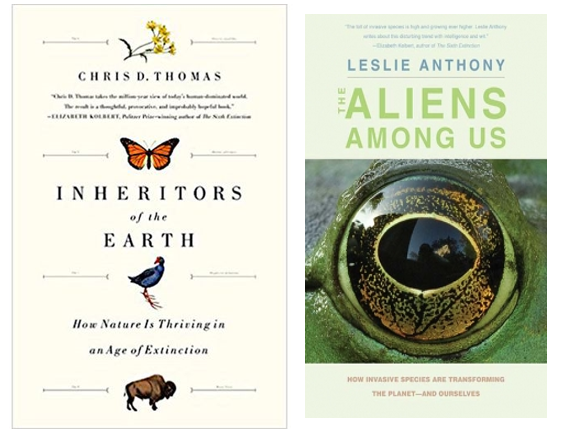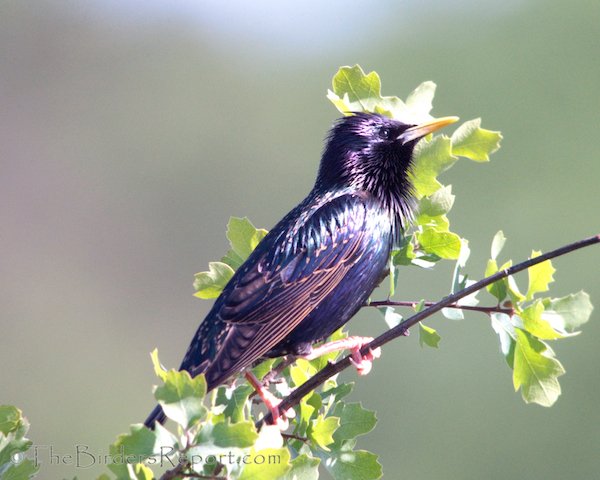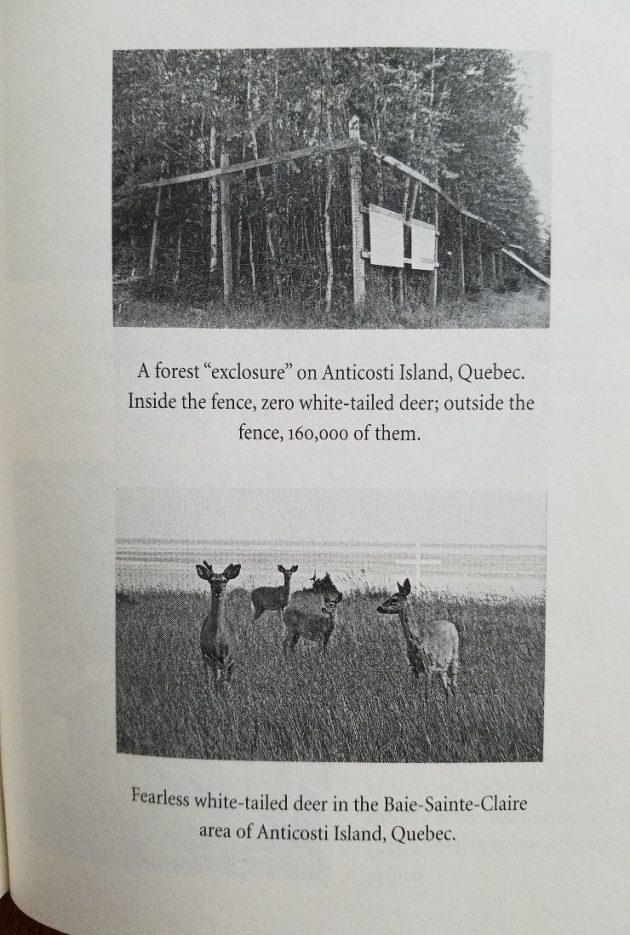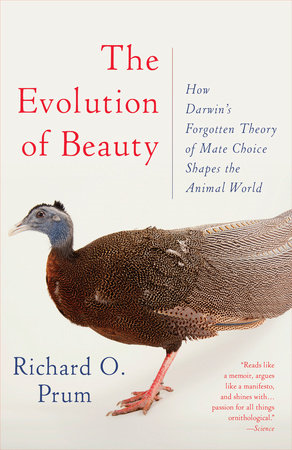
• Inheritors of the Earth: How Nature is Thriving in an Age of Extinction (Chris D. Thomas, Public Affairs)
• The Aliens Among Us: How Invasive Species Are Transforming the Planet – and Ourselves (Leslie Anthony, Yale)
• The Evolution of Beauty: How Darwin’s Forgotten Theory of Mate Choice Shapes the Animal World – and Us (Richard O. Prum, Doubleday)
I am a human being, so I am entitled to, and I do, say that the starling is an ugly bird. But I can admire people who, even knowing of their depredations (on other birds, on crops, and on home siding – i.e., mine), nevertheless appreciate and celebrate starlings and starlingness, including their excellent mimicry. That was a quality known to Shakespeare when he had his creation, Hotspur, threaten his King: “I’ll have a starling shall be taught to speak / Nothing but ‘Mortimer’ . . .”

Shakespeare was, supposedly, the reason starlings, house sparrows, and other non-native birds were introduced to North America. And it might well be that, if I saw the European Starling in its native habitat, including Stratford-upon-Avon, I would think it lovely. The trouble is, the definition of “native habitat” is, for starlings and many other species, now quite elastic.
All that is preliminary to saying that we shouldn’t get too far into the New Year before noting three good books published in 2017, all having to do, to greater or lesser extent, with evolution and Darwinism, invasive species, avifauna (as well as other fauna, and flora), how beauty comes to be and why beauty is important, and a slew of other good stuff.
You could not have two books more different from each other in slant, outlook, and prognosis than Inheritors of the Earth (the Thomas book) and The Aliens Among Us (Anthony). Each is centered on the subject of invasive species but, other than that similarity, it’s as if the authors are writing about different planets: it is edifying, not to mention entertaining, to read them back-to-back.
Thomas acknowledges that the Anthropocene epoch, the age of humans, is bringing a sixth great extinction, but that, by itself, is not something he much mourns. It is “the regrettable end of the evolutionary story” for many species, he says, “but it also represents the beginning of many new species.” Ecologists (and all earthlings) can legitimately celebrate what will follow extinction: “the sixth mass genesis of new biological diversity.”
For humans to set themselves up as arbiters of what is proper in nature, and who belongs where, is, moreover, inconsistent, hubristic, and doomed to failure. Ten thousand years ago, Thomas notes, house sparrows were unknown in Britain. By the time of Queen Elizabeth I, they were considered vermin, a bounty placed on their small heads. Now, there are still 10 million of them there but, due in part to a population dip after 1970, it is, in the reign of the second Elizabeth, illegal to kill them intentionally. Why? What’s magic about 1970? What, for that matter, is normal?
Change is normal, Thomas would say — dynamism is the norm, and, as his Chapter 7 title says, “Evolution Never Gives Up.” There are, for example, many examples of species that have moved due to (pre-human) climate changes – a dung beetle , now present only in altitudes over 3,000 meters in Tibet, was once the most common dung beetle is northwestern Europe. In other words, “we should never assume that where we see a species today is where that creature’s ancestors originated.”
Thomas’s exposition and argument are, at minimum, well worth serious consideration. He concludes with his four-part philosophy of conservation: accept change, maintain flexibility for future change, recognize that human activity is part of the evolutionary history of life, and realize that we still must live within planetary bounds.
One hundred-eighty degrees from Thomas is Leslie Anthony and his book The Aliens Among Us. Where Thomas is sanguine, Anthony is an eco-Jeremiah; where Thomas sees invasive species as bringing beneficent diversity, Anthony thinks the life of the world is becoming monotonous, with the inevitable result being “a long, slow dissolve to zonal homogenization.”
His examples are many, and his descriptions of them are cranked up to 11, from the “pure ecological mayhem” of the Great Lakes, to Japanese knotweed, a plant that “is actually eating the world.” Anticosti, in the Gulf of St. Lawrence, is the “Strangest Island in the World,” where, in a biotic reversal, introduced deer (who ate berries) chased away the bears, and where introduced frogs made the island, weirdly, a watery northern wilderness without many bugs.

(And, yes, he discusses the pestilent starling, as well.)
Anthony introduces many ecologists and biologists attempting to undo the damage already done by invaders. Due to various political, monetary, and other factors, their efforts must often, he says, “lapse into a regimen of expensive control in perpetuity.” In other words, compared to these people, Sisyphus had it easy.
Must all environmental debate now be made via invective? In the climate change area, that has been obvious for some time; perhaps it will come to plague writing about invasive species, as well. Anthony’s book includes an abundance of snark: St. Catharines, Ontario, has, among its other supposed flaws, “more churches than make any sense,” [says who?]; the aforementioned knotweed “invite[s] analogies the way conservatives invite condemnation – through their very existence” [what does that even mean?]. The work of those writers who doubt that species invaders are an existential issue (such as Thomas, though he isn’t named) is described with such terms as “nonsense,” “crackpot,” “foolishness,” and a passel of other pejoratives.
But if the reader can get past Anthony’s occasionally shrill tone, there is worthwhile material in his book – as, in his conclusion, when he draws analogies between invasive species and viruses in cells, diseases in populations, and even cultural memes in social media.
You may be surprised, if you go to the “New Books” shelves of your public library, to see how many books are published regularly on Charles Darwin and Darwinism — pro, con, and in-between. One of those that got a good deal of buzz last year was The Evolution of Beauty, previously given a thorough, discerning review by Donna, here. Suffice it to say, then, that you might want to have a look at the book, if you haven’t already: it will give you much to think about, and Richard Prum’s prose is a pleasure to read.

Unlike the Thomas and Anthony books, The Evolution of Beauty is concerned mostly with birds. Indeed, it’s when Prum tries to apply his theories (viz., that “beauty happens” and that evolution is often a result of female preferences, rather than “survival of the fittest”) to humans that he seems to veer off (as he admits) into speculation, rather than proven science.
There are two centerpieces of The Evolution of Beauty, both, in Prum’s treatment, incredibly detailed and incredibly fascinating. One is duck sex, which can be, he says, “elaborately aesthetic or shockingly violent and deeply troubling.” The other, not troubling but rather marvelous and beautiful, is manakin activity in leks.
If you’re reading this, you, like me, are a mere human, and so can’t understand, really, what a starling or any other bird is thinking. But take a look at the two male manakins in this video from the Cornell Labs Bird Cams Project, and the female. The expression on her face, trying to figure out which of the two is Mr. Right – that is to say, which is the more beautiful — is, to this human anyway, priceless.













Leave a Comment